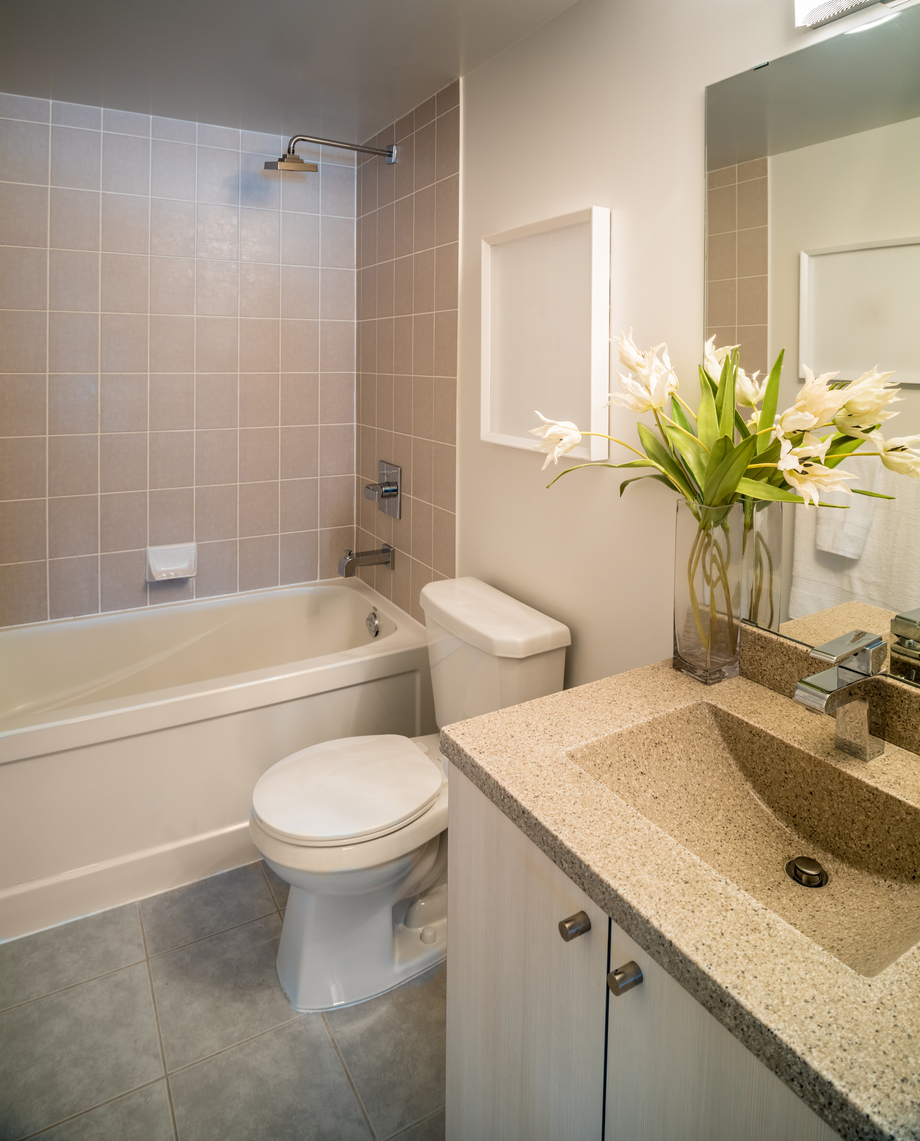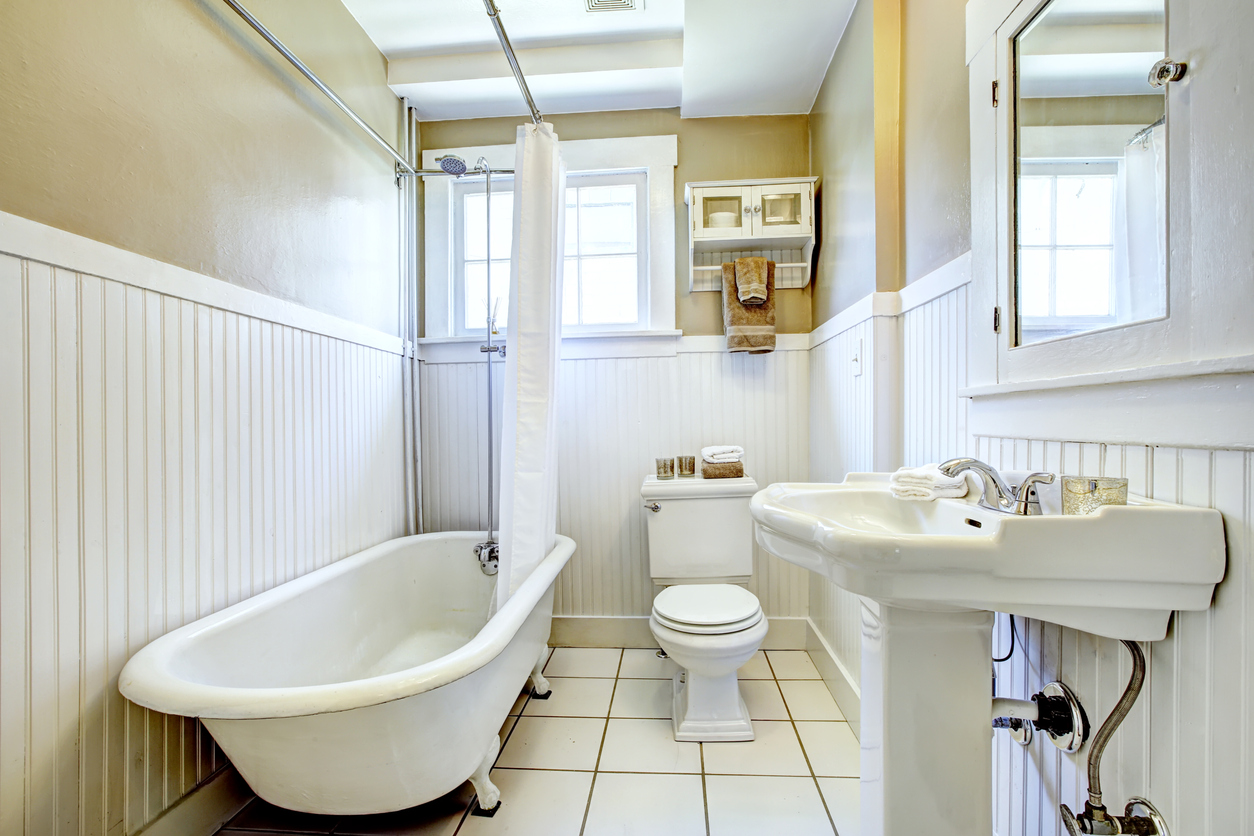

We may earn revenue from the products available on this page and participate in affiliate programs. Learn More ›
Q: I’m getting ready to start a full bathroom remodel, and I’m wondering how to choose the right bathtub for the space. Are there any guidelines for determining the best size for a bathtub?
A: Congratulations on your plans for your personal space! And putting in a tub is a wise choice, especially for resale value down the road, since a “full” bathroom is still defined as one with a tub.
Choosing the right bathtub size is crucial, whether remodeling an older bathroom or adding a new one.
Too small, and you’ll be uncomfortable while bathing; too large, and the rest of the bathroom will look and feel cramped. And these days, bathtubs come in more sizes, shapes, and depths than ever, so the key is determining which will fit both your lifestyle and your square footage.
RELATED: The Big Bathroom Remodeling Design Decision: Tub vs. Shower
An average size (60-inch-long, 32-inch wide, and 18-inch-deep) alcove tub works in most bathrooms.
The most familiar setup for a bathtub or tub/shower combo is a rectangular alcove tub, surrounded by walls on three sides, with easy access from the one open side. This configuration makes efficient use of normally limited bathroom space and gives the room a more streamlined appearance.
The bathrooms in many homes, particularly older or small homes, are sized to house a standard alcove tub, which is 60 inches long, 32 inches wide, and 18 inches deep on the outside measurements. The size of the inner basin can vary, depending on the thickness of the tub surround, but on average measures 55 inches by 24 inches at the top of the basin, and 45 inches in length and 22 inches in width at the bottom of the tub, due to the slight slant of the tub walls. That provides enough space for an average-size adult to fully submerge his or her legs while sitting upright but isn’t large enough to sink down far enough to submerge the bather’s legs and torso at once. Tall bathers are likely to find that they cannot fully stretch out their legs, leaving the tops of their knees poking above the water.
The tubs in very small bathrooms are often a few inches smaller in both width and length, but some homeowners with roomier alcoves still prefer to install these smaller tubs to allow for a larger surround that provides more space for bathing necessities. Smaller tubs are also an option in a children’s bathroom.
Larger (72-inch-long, 36-inch-wide, 20-inch-deep) alcove tubs offer more room for different body sizes.
If you have the space or plan to enlarge the bathroom, an extra-large alcove tub lets the tall bather fully extend his legs, the average-height bather comfortably submerge his torso, the plus-size bather fit comfortably, or two average-size adults squeeze in together. As a general rule, extra-large alcove tubs are around 72 inches long, 36 inches wide, and 20 inches tall at the outside measurements, providing plenty of room for just about anyone who really enjoys relaxing in the tub.

Freestanding tubs give you plenty of room to relax.
Freestanding tubs, as the name suggests, are not tucked into an alcove surrounded by walls, but instead, are in the middle of the bathroom, or at least a fair distance away from the walls and often serving as a focal point. You’ll find a wide range of shapes, styles, and sizes of freestanding tubs, but as a general rule, these are at least somewhat larger than the typical alcove bathtub.
The two most common styles for the freestanding tub are clawfoot and oval.
- Clawfoot tubs, which date back to the early 19th century, sit on short metal legs; originally, the feet resembled those of a bird or other beast (hence the term). The vintage appeal and romantic flair of a clawfoot tub make it well suited to older homes, particularly Victorian, Craftsman, and Cape Cod. The most popular length for a clawfoot tub is either 60 or 66 inches long, but you’ll find them as short as 54 inches, and as long as 72 inches. Widths are also variable, with most falling between 30 and 40 inches across, but the greatest issue is height—ranging from 24 to 30 inches and making it a considerable stretch to get in and out of the tub, not so easy for folks with mobility problems. Once in the water, the average bather can sink down deep, and large clawfoot tubs are also a good option for those who like to bathe with a partner. As with all bathtubs, the inner dimensions of the tub basin are a few inches smaller in both width and length, due to the slight slant of the inner walls.
- Oval freestanding tubs sit directly on the bathroom floor, and while styles vary, most have a sleek, minimalist appearance that works well in any modern decorating style. As with clawfoot variety, there are many bathtub sizes to choose from, but the most popular is 60 inches long, 41 inches wide, and 24 inches deep. That provides ample space for relaxing, particularly for the plus-size bather. If that’s too much tub for your space, you’ll also find oval freestanding tubs as small as 55 inches by 27 inches by 15 inches. If you have the room, and really love to luxuriate in the bath, there are oval freestanding tubs as long as 72 inches.

Soaking tubs feature more depth (starting 27+ inches) for relaxing both body and mind.
For many homeowners adding or remodeling a bathroom—and giving it spa-style qualities—the depth of the tub is an important factor, as soaking tubs have become more popular. Any tub that’s deeper than average qualifies as a soaking tub, but it’s the Japanese soaking tub (ofuro in Japanese) that many people envision when thinking about these built-for-relaxing baths. While you can, of course, get clean in an ofuro, they are perfect for soothing both body and mind.
Soaking tubs have been enjoyed in Japan for centuries, but it’s only in recent years that the style has really caught on in the western world. The traditional Japanese soaking tub is round and made of wood, although square tubs are also an option, as are more familiar tub materials, including ceramic over stainless steel, copper, and acrylic. But what sets these tubs apart from other styles is their height: As a general rule, an ofuro is at least 27 inches deep, and the bather crouches on the tub floor submerge up to the neck. Many western soaking tubs, especially deeper ones (some are as deep as 34 inches) have built-in seats so the bather can sit rather than crouch. Because they are designed for bathing upright, these freestanding tubs are often shorter than other bathtub types, some as small as 40 inches in diameter.

Corner tubs (starting at 48 by 48 by 18 inches) are great for bathing à deux.
While you might think a corner tub saves on space, actually, these triangular tubs typically require more room than a traditional alcove model, as they are sized large to provide plenty of room for lounging or bathing with a partner. The average corner tub is 60 inches at its widest point, 60 inches in length, and 20 inches high. If you have a smaller bathroom but your heart is set on a corner tub, you’ll find models that are 48 inches by 48 inches by 18 inches. And of course, if space is not an issue, there are king-size corner tubs that measure 72 inches by 72 inches by 20 inches.

Walk-in tubs (60 inches long, 30 inches wide, by 30+ inches deep) are designed to give people with mobility issues more independence.
These taller-than-average tubs have a door permitting the bather to simply step into the tub, rather than swing one leg up and over the side to enter or exit the bath. They were designed for folks with mobility issues, weakness, lack of balance, or general infirmity, diminishing the risk of falls and making it easier for someone who might otherwise require assistance to use the tub unaided. Once inside, the bather sits on a small built-in bench and then turns on the water to fill the tub. When bath time is over, the tub is drained, and then the bather opens the door to exit.
Walk-in tubs are usually alcove style and are generally the same average size of 60 inches in length and 30 inches in width. They differ in their height, however, which is normally around 30 inches to provide depth enough for the bather to be comfortably submerged while sitting on the built-in tub bench. But as with regular alcove tubs, you can find smaller and larger walk-in tubs to accommodate larger bathers, or simply allow more room to stretch out a bit in the tub.
